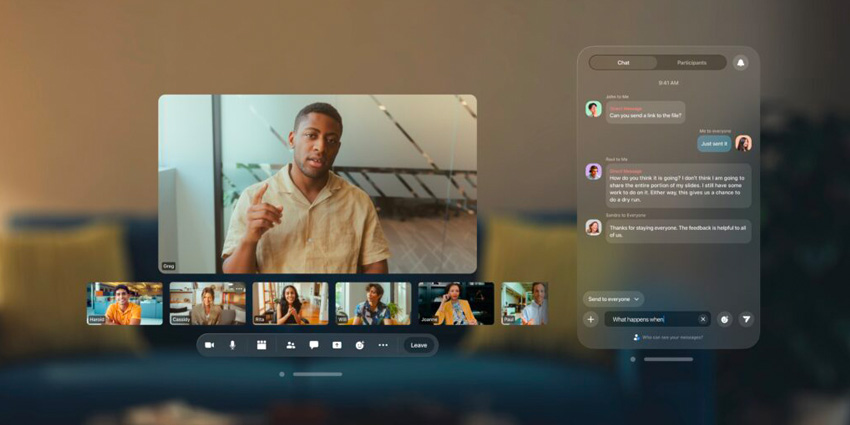Today, reports are emerging, sparking speculation over Apple’s Vision Pro production plans. Recent reports are highlighting how Apple’s hardware and manufacturing partners are reducing forecasts surrounding the assembly of Vision Pro devices.
According to reports, Apple’s overseas manufacturing partner Luxshare Precision Industry Co is reducing its initial product assembly to 400,000 units, down from Apple’s 1 million unit forecast. Moreover, Luxhare was also internally expecting to produce 18 million units annually in the coming years.
On the other hand, two of Apple’s component manufacturing partners are also reducing expectations to a different number. Apple reportedly is only requesting enough components to produce roughly 130,000 to 150,000 units.
Apple is facing hurdles, with quotes suggesting that manufacturing “complexity” is leading to “difficulties” in production stemming from its micro-LED and curved, outward-facing lens. Moreover, Apple expressed dissatisfaction with its Sony and TSMC suppliers around the time it hosted WWDC 2023.
Apple’s Vision Pro Price Doubles Materials Price and Production Partners
Last month, XR Today reported on the discovery of a bill of materials (BOM) analysis – that consultancy Wellsenn XR found – which highlighted that the materials used in the Vision Pro cost roughly $1,590, almost half the cost of the $3.499 device.
Moreover, the BOM analysis uncovered a collection of Chinese and Twainesse contractors assisting Apple with its Vision Pro production plans.
The report first highlighted how Apple is collaborating with long-time partner Luxshare to facilitate the now-reduced Vision Pro product assembly plans. Additionally, Apple is working with 11 Twainese firms to help deploy the Vision Pro, including Largan Precision Co, Genius Electronic Optical Co, GIS-KY, and Taiwan Semiconductor Manufacturing Co.
Moreover, Apple is working with other major industry suppliers such as Samsung Electronics, LG Electronics, and Sony for the Vision Pro debut.
At the time, Ivan Lam, a Senior Analyst at Tech Research Firm and Consultancy, Counterpoint, added:
It is evident that Vision Pro’s current suppliers, similar to the structure [of companies] behind the iPhone, are among the world’s top consumer electronics component providers. When Apple releases a lower-priced AR/VR product in the near future, the supply chain structure is likely to be quite similar to the current one.
While Apple is securing a strong list of industry partners to ensure success, unforeseen hurdles could always delay the device and reduce forecasts. Moreover, some dismay from audiences over the device’s price point could have led to a reduction in shipped devices.
More on Apple Vision Pro
Apple is planning to debut its costly and enterprise-grade device in 2024. While production challenges may push that date back, the firm is working hard to debut a robust immersive framework that supports various use cases.
Already, Apple is allowing developers to create new or port pre-existing applications onto its VisionOS platform, which only supports hand-tracking native XR applications.
The device leverages spatial computing to create a 360 immersive environment that allows users to interact with conventional and immersive applications using body gestures. Apple is also partnering with Unity to distribute developer tools and resources to promote content creation on the platform.
It is also worth noting that Unity is already the basis of various immersive applications available on the market, making porting a viable option for XR developers. Additionally, the flexible Unity framework allows Metaverse applications, including Rec Room, to port easily to VisionOS.
Moreover, Vision Pro leverages three core design concepts to secure its spatial computing vision: Windows, Volumes, and Spaces. Apple is leveraging this three-layered approach to ensure users with a unique, easy-to-use, and flexible spatial computing interface.
Windows represent the 2D user interface, while volumes are RT3D immersive experiences, and Spaces are the spatial computing environment in which volumes and applications exist.
Moreover, the device contains competitive features such as a custom M2 Silicon chip, Apple’s purpose-built R1 graphics processor, 23 million pixel display across two huge micro-OLED lenses, enabling a total display resolution of 4096 x 5464 pixels, high-dynamic range (HDR), wide colour gamut (WCG) outputs, 2-hour battery life, an immersive camera for capturing spatial audio/photos/video for peer-to-peer sharing, iPhone/iPad/Mac synchronization, a light seal, a LiDAR scanner, and a TrueDepth camera.







